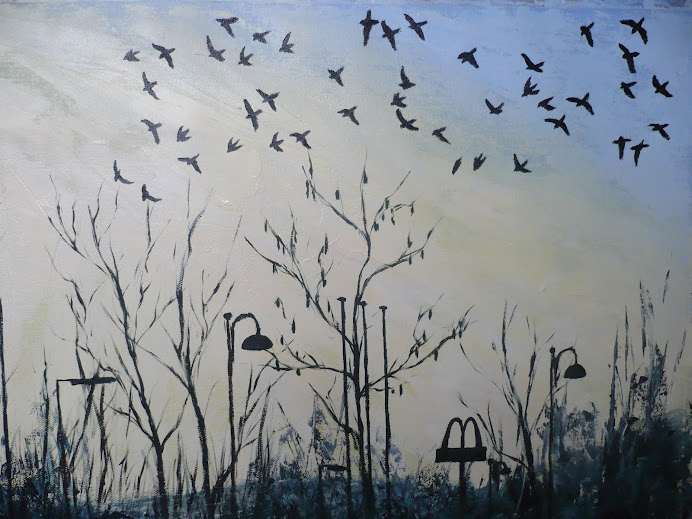 Once I'd outlined the figures onto the top layer on perspex I could start applying the pond weed to the bottom layer. I did this by painting roughly with a small sable brush then rubbing over it with oil pastels. I then splattered green and brown acrylic paint to represent small parts of duck weed that grow on the surface of the water.
Once I'd outlined the figures onto the top layer on perspex I could start applying the pond weed to the bottom layer. I did this by painting roughly with a small sable brush then rubbing over it with oil pastels. I then splattered green and brown acrylic paint to represent small parts of duck weed that grow on the surface of the water.
Once I was happy with this bottom layer I started preparing the canvas. I sized, but didn't prime it - as I wanted the paint to be able to breath and not be sealed in by layers of emulsion. I then painted a base coat of brown paint so that the white canvas wouldn't show through. This photo on the left shows acrylic paint squeezed onto the canvas, along with white PVA glue.
 This second photo shows the paint once it had been scrapped across with the plastering tool. The reds and greens are contrasting nicely and help to lift the browns and blacks from looking too muddy.
This second photo shows the paint once it had been scrapped across with the plastering tool. The reds and greens are contrasting nicely and help to lift the browns and blacks from looking too muddy.
Embedding the perspex into the canvas was an interesting process as it was surprising how many air bubbles got trapped underneath and how much effort was involved with forcing them out. I'm glad that I didn't prime the canvas now because the tiny gaps left in the canvas allowed the air to be pushed out through the back easier than if it had all been sealed with paint.
This close up shows the interesting effect of the flickers of colour from the dried paint on the perspex reacting with the wet paint on the canvas. It reminds me of a nebula.



No comments:
Post a Comment